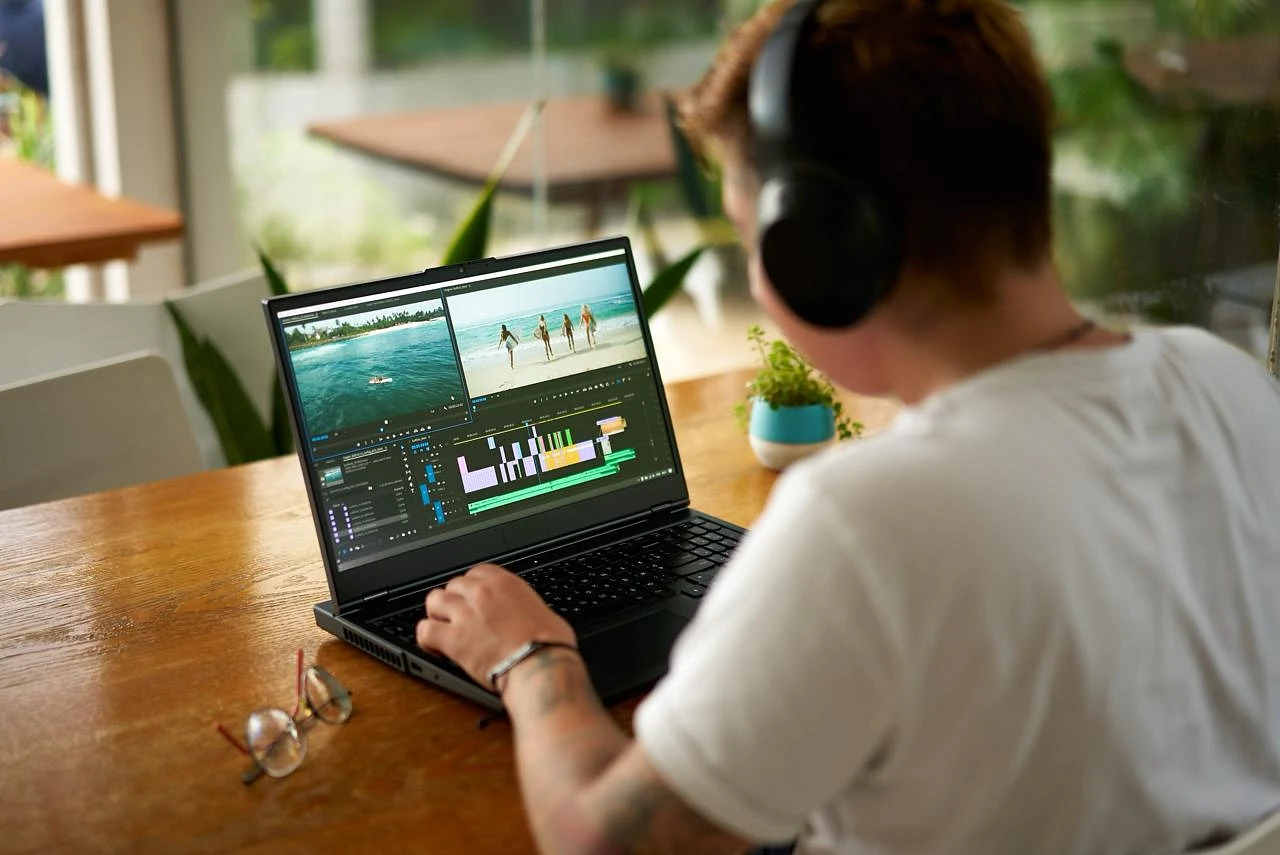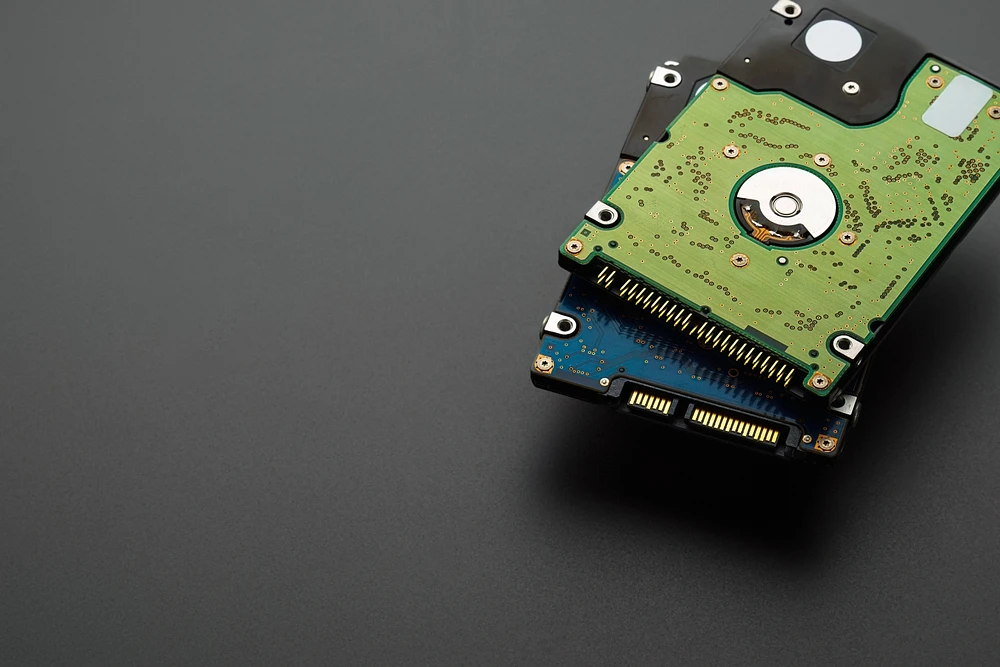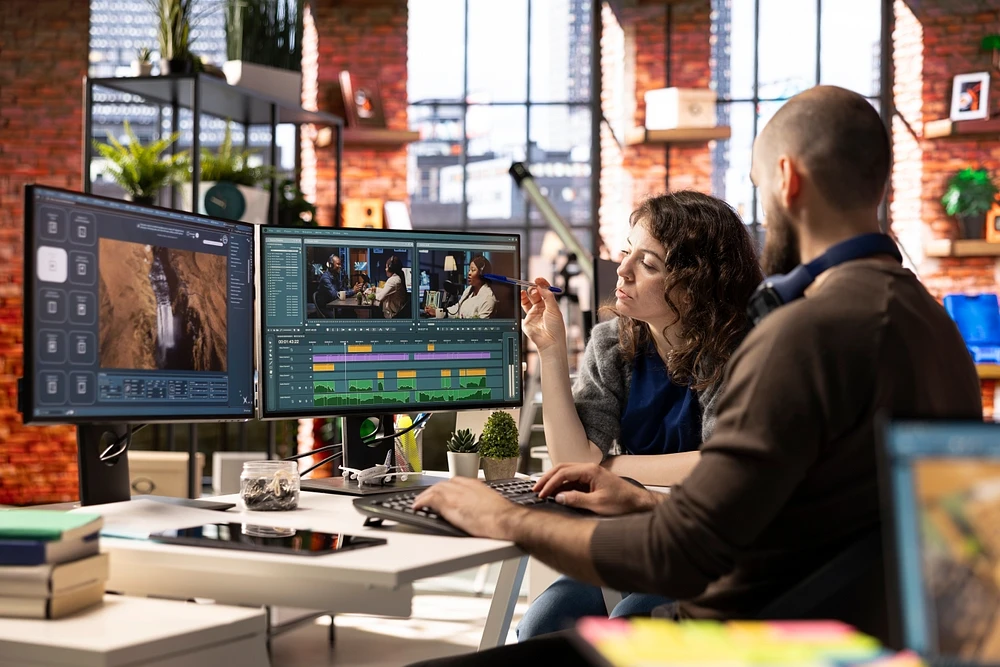Video editing is no longer chained to a desk. The entire craft has gone nomadic. This shift demands machines that are both powerhouses and portables—a seriously tough combo to nail. You’re not just looking for a fast processor; you need best laptops for video editing on the go that can handle 4K footage without melting down or draining its battery in twenty minutes.
TL;DR - Quick Overview of Our Top Picks
- Apple MacBook Pro 16-inch (M3 Pro) - Best overall choice with 22-hour battery life and exceptional M3 Pro performance
- ASUS ProArt StudioBook 16 - Windows powerhouse featuring OLED display with 100% DCI-P3 color accuracy
- Dell XPS 17 - Sleek all-rounder with 4K display and strong RTX 4050 graphics performance
- RAM Requirements - Minimum 16GB for 1080p editing, 32GB+ recommended for 4K workflows
- Display Priority - Color-accurate screens with high brightness levels beat high refresh rates for editing
- Battery Reality - Expect 4-6 hours of actual editing time, regardless of manufacturer claims
- Storage Needs - Fast PCIe SSDs with 1TB+ capacity handle large video files efficiently
What Makes a Laptop Great for Video Editing on the Go?
Performance Requirements: CPU, GPU, and RAM
Video editing really pushes hardware to its limits. A laptop meant for this work needs a processor that can handle several intense jobs simultaneously. It must decode high-bitrate video, apply complex effects in real-time, and keep your timeline snappy while you scrub.
Here, core count matters most. Modern chips like Intel's 13th-gen or Apple's M3 excel because they distribute work across many cores. This leads to exports that finish much quicker and previews that don't stutter, even with lots of layers.
A good GPU is also important. It handles more than just games. Key jobs—rendering certain effects, timeline rendering, and hardware encoding—get moved from the CPU to the graphics card. NVIDIA's RTX line uses its dedicated CUDA cores for this work. Apple's unified memory design lets the CPU and GPU share one fast pool of RAM, which avoids a common bottleneck.
Display Quality: Color Accuracy, Resolution, and Brightness
Screen quality decides a project's accuracy. A miscalibrated monitor means you have to guess, and you can be sure the final product will look different on other screens.
Color gamut coverage beats high refresh rates for this kind of work. You need to know the green you see matches the exact green in a standard like DCI-P3 or Adobe RGB. That precision can't be a maybe for client work. Brightness is also important. A peak of 500 nits or more fights glare, so you can adjust exposure reliably, even in a sunny room. Without it, you're flying blind on a bright day.
Resolution affects workflow speed. A 4K panel gives you more space, so your timeline and tools can stay on screen without constant scrolling. It also shows fine details, like noise or sharpening issues, that a 2K screen could hide. But 2K is still a good option for a laptop. It gives a sharper picture than 1080p without destroying battery life. That balance matters. Since powerful editing laptops often have smaller 15- or 16-inch screens, a higher pixel density (PPI) is needed.
Portability: Balancing Weight, Battery Life, and Build Quality
True portability means wrestling with physics. You notice every extra ounce after a mile, so hitting that sub-5-pound mark really matters. It decides if a tool stays out of your way or becomes a weight on your shoulder, breaking your focus through sheer fatigue.
This gets worse with overstated battery life. Actual editing work—rendering previews, managing multiple tracks—chews through power. Plan on about half the advertised time. That shapes a mobile workflow; finding a cafe spot near an outlet isn’t just advice, it’s essential, making you schedule your work around battery levels.
Build quality isn’t just about surviving bumps. An aluminum unibody adds rigidity, fighting flex to protect parts inside. Plastic can be tough in its own way by bending, but it often feels cheaper and may start to creak, long before the device actually fails.
Connectivity: Ports, Thunderbolt, and Expansion Options
Modern video editing really tests a laptop's connections. You need direct access to all your gear, without a mess of dongles getting in the way.
Thunderbolt ports are a game-changer. They offer huge bandwidth for fast external SSDs and pro monitors, all through one cable. A built-in SD card reader is also a big plus, letting you pull footage straight from a camera. HDMI is a must for a solid, direct feed to a client’s display.
Even older USB-A ports still matter for things like wireless accessories or hardware license keys.
For editors who travel, the best laptops combine a slim design with a practical set of ports. USB-C hubs can add more connections, but built-in options are simply more reliable. They mean less worry about extra accessories that might get lost or break. It comes down to having the right tools right on the machine.
Top 3 Laptops for Video Editing on the Go in 2025
1. Apple MacBook Pro 16-inch (M3 Pro) - The Ultimate Portable Powerhouse
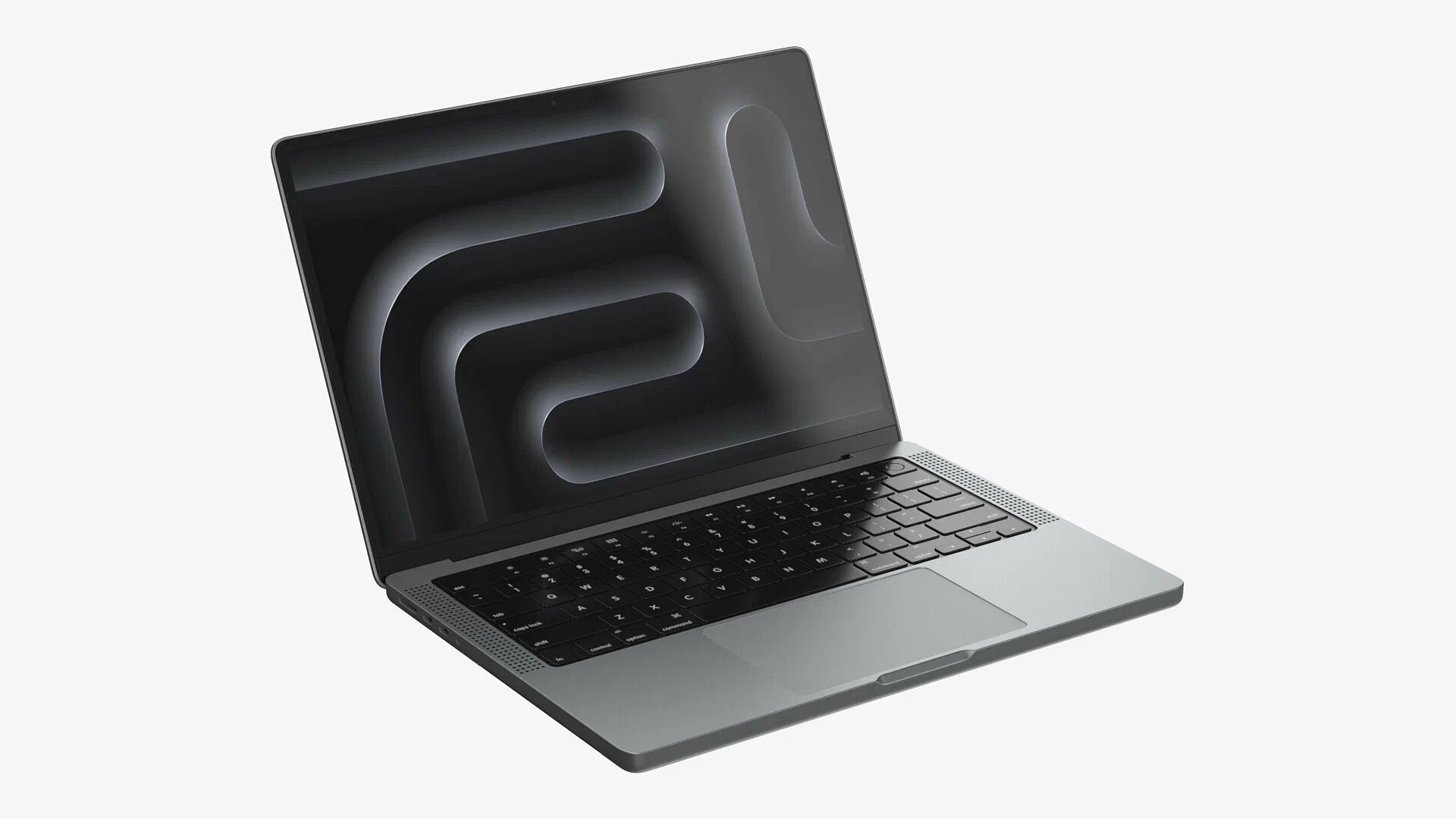
The 16-inch MacBook Pro remains the undisputed champ for cutting video on the go. Its M3 Pro chip’s unified memory is the real magic; 36GB of RAM just works more efficiently, breezing through tasks that choke similarly-specced, traditional laptops. This translates to buttery playback with multiple streams of ProRes codecs. Then there's the screen. The 16.2-inch Liquid Retina XDR hits a sustained 1000 nits, peaking at 1600. For editors, this means true on-the-go HDR grading—what you see is what you get, with no compromises.
Key Strengths:
- Exceptional battery performance for extended mobile editing
- Silent operation under most workloads
- Excellent build quality and premium materials
- Strong ecosystem integration with iOS devices
- Hardware-accelerated ProRes encoding and decoding
Considerations:
- Higher price point compared to Windows alternatives
- Limited upgrade options after purchase
- Software compatibility may require specific Mac versions
2. ASUS ProArt StudioBook 16 - The Windows Creator's Dream
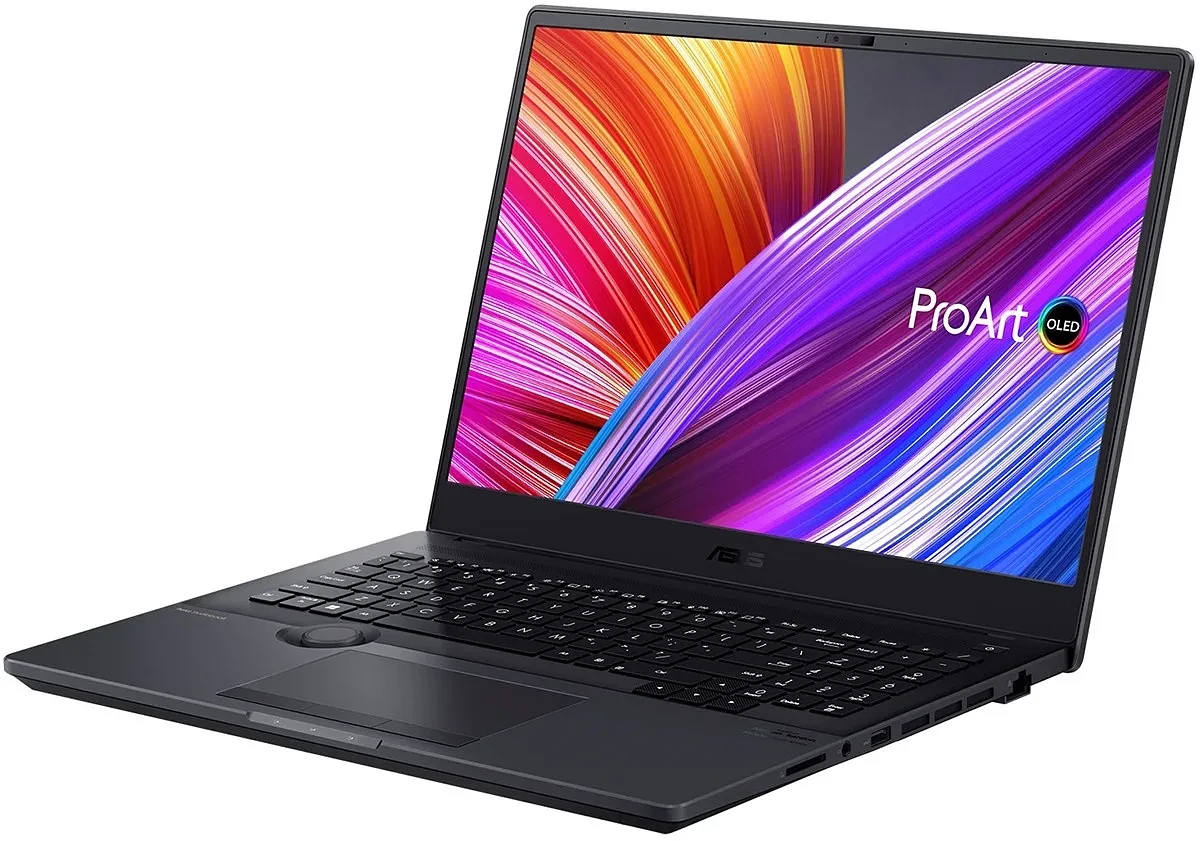
ASUS made its ProArt StudioBook for creatives. That 16-inch OLED screen isn't just nice to look at—it’s a finely tuned tool. Full DCI-P3 gamut and Pantone validation mean color pros get the accuracy required for client work.
Inside, an Intel Core i9-13980HX processor and NVIDIA RTX 4060 GPU work together. This setup handles GPU-accelerated effects and new AI features in apps such as DaVinci Resolve.
With perfect blacks and strong vibrancy, the 3.2K OLED panel shows your final image accurately. This way, color decisions you make will translate well to other displays.
Key Strengths:
- Stunning OLED display with professional color accuracy
- Powerful CPU and GPU combination for demanding workflows
- Comprehensive port selection including Ethernet
- Expandable RAM and storage options
- Windows software compatibility
Considerations:
- Heavier than MacBook Pro at 5.3 pounds
- Battery life limited to approximately 4-5 hours during editing
- OLED displays may show burn-in over extended use periods
3. Dell XPS 17 - The Sleek Windows All-Rounder
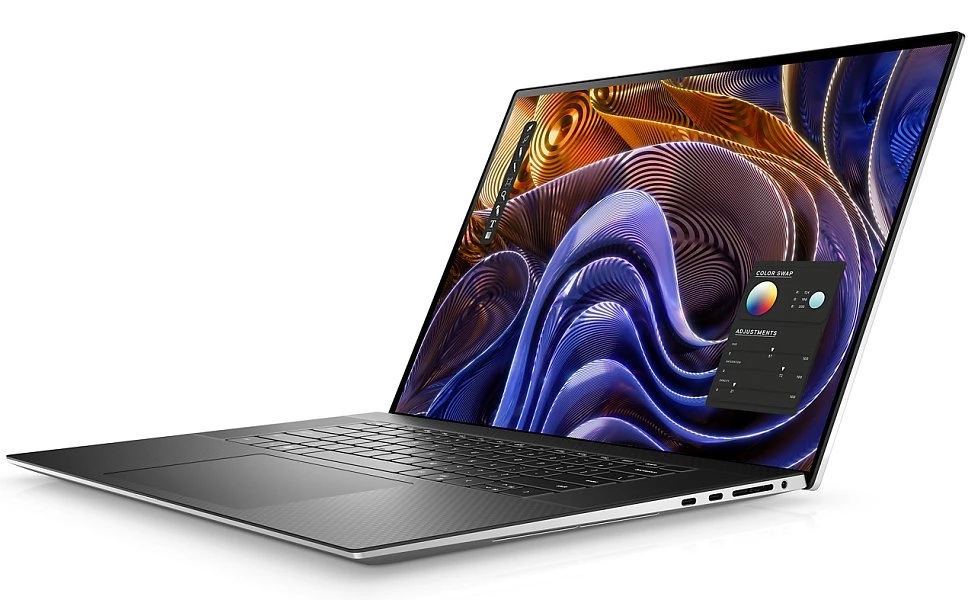
Dell’s XPS 17 does something pretty clever: it fits a huge 17-inch 4K screen into a body that doesn’t feel oversized. Those super slim bezels mean you get more display without all the extra weight. For many video editors, the RTX 4050 graphics card is more than enough—it handles everyday editing and color work easily. But it does have limits. You might run into trouble with heavy 3D projects or complex compositing.
Where this laptop really stands out is with ports. It has four Thunderbolt 4 connections, which is a big deal. You can connect several monitors, a super-fast RAID setup, and professional audio equipment—all at the same time, without any dongles.
Key Strengths:
- Large 17-inch display in relatively compact chassis
- Excellent build quality and premium materials
- Comprehensive Thunderbolt 4 connectivity
- Competitive pricing for included specifications
- Touch display adds interaction flexibility
Considerations:
- RTX 4050 may limit performance in GPU-intensive tasks
- 16GB RAM configuration may require upgrades for 4K editing
- Battery life varies significantly based on display brightness settings
Comparison Table: Key Specifications at a Glance
|
|
MacBook Pro 16" |
ASUS ProArt 16 |
Dell XPS 17 |
|
CPU |
M3 Pro (12-core) |
i9-13980HX (24-core) |
i7-13700H (14-core) |
|
GPU |
18-core integrated |
RTX 4060 (8GB) |
RTX 4050 (6GB) |
|
RAM |
36GB unified |
32GB DDR5 |
16GB DDR5 |
|
Display |
16.2" XDR (3456x2234) |
16" OLED (3200x2000) |
17" 4K (3840x2400) |
|
Weight |
4.7 lbs |
5.3 lbs |
5.37 lbs |
|
Battery |
Up to 22 hours |
Up to 10 hours |
Varies |
|
Price Range |
$3,499+ |
$2,799+ |
$2,199+ |
How to Choose the Right Mobile Editing Laptop for Your Workflow
What you do determines the machine you need. Editing 4K video on a train is nothing like cutting 1080p clips for Instagram at a desk
Think about your projects. A processor that handles simple edits effortlessly will struggle with a multi-cam edit and heavy color grading. For complex effects or motion graphics, you’ll want a strong GPU. It’s what gives you real-time previews instead of a loading bar.
Consider how often you move around. If you carry a laptop every day, weight becomes a big deal. For occasional travel, more power can be worth a heavier machine. Judge battery life on real use, not manufacturer claims—expect about half what they say.
Cost is the biggest factor. High-end models cost more now but last longer and hold value better. They're a smarter investment over time. But a mid-tier machine can be the sweet spot if its specs match your work exactly.
FAQ: Frequently Asked Questions About Mobile Video Editing Laptops
What is the minimum RAM for 4K editing?
Start with 16GB. For a smoother experience, especially on complex timelines, 32GB is the better choice.
Can you get a good editing laptop under $1,500?
Yes. You’ll make some trade-offs, though. Focus your budget on a dedicated graphics card and a fast NVMe SSD.
How important is GPU vs CPU?
You need both. A processor handles general tasks and playback. A graphics card speeds up effects and rendering.
Are gaming laptops good for video editing?
They pack strong graphics power for the money. Downsides often include shorter battery life and screens that aren't as color-accurate.
What battery life can I expect when editing?
Plan for 4 to 6 hours of actual editing. It’s a heavy workload that drains a battery much faster than normal use.
Is a MacBook Pro worth it for mobile editing?
For pros, it often is. You get top-tier battery performance, excellent displays, and a very reliable, streamlined system.
What ports are essential?
Look for Thunderbolt or USB-C for drives and monitors. An SD card slot is handy for camera footage, and a headphone jack is a must.




